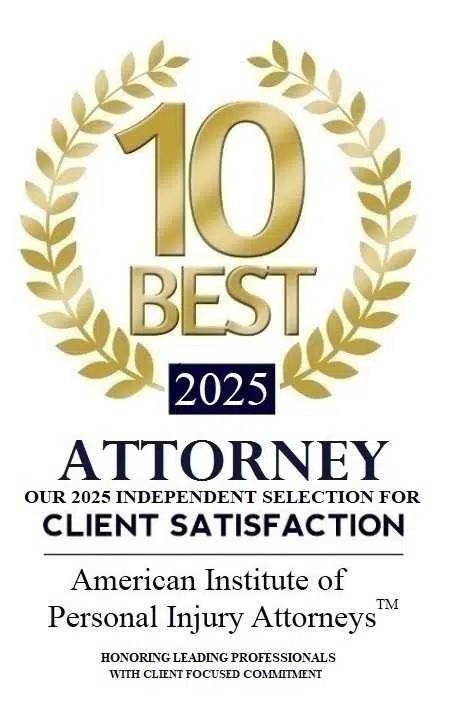Rear-end collisions are some of the most common car accidents. A rear-end collision typically involves two cars. The car coming up from behind crashes into the rear fender of the car directly in front. Motorists suffer some serious injuries in these wrecks, including whiplash and concussions.
Because these are dramatic accidents, it matters how we assign rear-end collision faults. Either driver could be at fault for the collision, or they could share liability. Michael J. Lichner is happy to review the facts to determine the rear-end collision fault. Call our office to schedule a free consultation with a Joliet rear-end accident lawyer.
Who is at Fault for a Rear-End Collision?
Typically, one of two drivers is at fault: either the driver of the car in front or the driver of the car in back. One misconception is that the driver who is struck is never at fault. However, it’s just not that simple. Instead, we need to analyze the choices each driver made and whether they were acting reasonably.
When is the Driver of the Car in Front at Fault?
The driver in front is sometimes at fault. This motorist might have failed to drive with sufficient care and even possibly broken a traffic law. Some common situations where this driver is at fault in a rear-end collision include:
- Brake checking. This involves hitting the brakes for no reason. Some drivers brake check when they are annoyed that another motorist is following too closely. However, it’s negligent to suddenly brake when you don’t have to.
- Cutting off a motorist. A driver might make a turn and pull directly in front of another car. This often happens on the freeway, when there isn’t enough room for a driver to merge with traffic, but the driver pulls in anyway.
- Backing up without using mirrors. A motorist could back out of a parking spot and pull straight into an oncoming car. This is a rear-end collision which is caused by the driver who is backing up.
These are some common situations where a driver is at fault even though another car smashed into their rear fender. The driver is at fault because they were not careful, as we expect motorists to be while driving.
When is the Driver of the Car Behind At Fault?
Most people assume this driver is to blame because they crash into the car in front. And, in most cases, that’s probably true. In our experience, more rear-end collisions are caused by the driver of the second car (the one behind).
This driver could be at fault due to:
- Tailgating. Many drivers tailgate without even a second thought. You should leave several seconds of space, but some drivers leave less than a second. They go for miles “riding” on the bumper of the car in front of them. When the car in front slows down—possibly to make a turn—there isn’t enough time for the driver to stop, so a crash ensues.
- Distractions. A driver might crash into a car which is stopped at a light. The driver is distracted by a cell phone or something else and never even sees the light ahead until it’s too late.
- Speeding. A motorist who is speeding needs more time to come to a complete stop. They could easily rear-end another car because of excessive speed. Speeding will put a driver at fault for rear-end collisions.
- Fatigue. Tired motorists can nod off briefly for a split second. When traveling at high speeds, they could easily travel the length of a football field before popping their eyes open.
- Intoxication. A drunk or high motorist is more prone to crashing into a car, even one that is stopped in front of it. Chemical impairment usually leads to delayed reflexes and poor coordination, not to mention blurred vision. A driver might be unable to avoid a collision.
Rear-End Collision Fault Can Be Shared
In Illinois, fault can be shared. Each motorist might have some share of fault. For example, a driver might brake check, but the driver behind them is also tailgating. In this simple example, both drivers have failed to drive with sufficient care.
Under 735 ILCS 5/2-1116, a personal injury victim is prohibited from receiving damages if they are more than 50% responsible for their injuries. So if one driver is 70% to blame and the other is 30%, then only the driver with less than 50% fault can seek financial compensation.
Even if you are 50% or less at fault, your damages are reduced in proportion to your share of fault.
That will take a big bite out of any settlement.
Contributory fault matters even if you are negotiating a settlement. Any negotiation takes place against a backdrop of what will happen if you end up at trial. If evidence is strong that you are more than 50% at fault, then the other side will dig in and not offer a settlement.
Analyzing Evidence to Assign Fault
Unsurprisingly, each driver points the finger at the other following a wreck. What now?
Call our office. Our Will County car accident lawyers can review all the evidence to assess fault:
- Witnesses. Anyone who observed the accident can tell us what they observed. They might have seen a driver merge into traffic when there was no room, or they saw a driver nod off and crash at high speeds into a vehicle stopped at a red light.
- Dash cam video. A nearby vehicle might have a dashboard camera that recorded the accident.
- Physical evidence. The damage to the vehicles can tell us how fast each car was going, which is some helpful evidence to assign fault.
We use this evidence to determine who is at fault for a rear-end collision.
Schedule a Free Case Evaluation
Injured victims and their families need expert legal advice. Michael J. Lichner has the experience and knowledge to help. Contact us today to discuss a rear-end collision, as well as your injuries. A driver at fault rear-end collision should pay compensation. We can advise you of your legal rights and, when hired, begin gathering evidence to prove fault.












